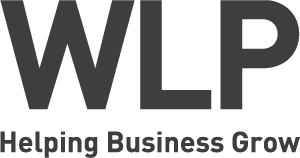Getting the right people with the right mix of competence (skill, knowledge and experience) into your manufacturing business, is arguably one of the most difficult challenges management teams face. Especially when you consider the fact this needs to be achieved whilst developing, sustaining and maintaining it as a valuable workforce.
We often hear the debate about a ‘skills shortage’, but what is the real story behind this platitude? Is the availability of skilled people the whole issue? Is big industry to blame somehow by not investing enough in the future? Does it mean that past and present governments are culpable?
Quite possibly.
However, some would argue that SMEs struggle to find either management time, drive or ability to put a strategy in place, that would essentially mitigate the risks and problems of being unsuitably or insufficiently resourced. A shortage of skills is only part of the overall picture. Taking a wider, long-term view of the workforce and its competence is crucial.
Establishing Competence Requirements
When we think about how to establish the needs of a business in terms of competence, it is often left to ad hoc subjective discussions with a short-term view. This is fine to get the ball rolling but needs change over time.
A sensible approach would be to initially quantify the needs, then monitor and measure against these needs objectively at appropriate regular intervals. By planning strategically in this way, you are removing the guesswork and laying the foundations for organisational resilience.
Having a basic plan in place is a good start, but what are the other aspects of sustainability and resilience relating to people that need to be considered? What else other than ‘what, who and when’ should be considered in a robust resource strategy?
It would be prudent to next plan for how you are going to keep, engage and improve your people, as well as protect against unexpected change. This is where the real challenge lies and where the real work begins.
Keeping your employees engaged could, for example, start with benchmarking your business against a ‘people excellence’ model. This will show you where the opportunities are for ensuring you keep your employees motivated and feeling valued. A focus on Continuous Professional Development (CPD) balanced against the needs of the business, and a focus on capturing risks and opportunities as part of a disaster recovery plan (including elements of resource risk) would also be well advised.
Further Considerations
Beyond this there are further considerations, such as how to plan ahead for an ageing workforce. With pension age increasing, employees will consider staying in work longer. One issue is the fact that employees will be retiring at varying ages, making recruitment planning even more of a challenge. It cannot be assumed employees will retire at a specific age, meaning a more individual and flexible approach is required. The older sections of a workforce will likely form the greater part of a company’s valuable skills, knowledge and experience. This needs to be protected, with any tacit knowledge being captured as soon as possible. This is known as knowledge management – but that is a subject for another post.
One option to mitigate the risk of the ageing workforce is to give employees the option of a flexible retirement, i.e. working reduced hours, while at the same time drawing down their pensions. Flexible policies in other areas of the business will also help to attract a greater number of potential candidates when recruiting, while reward(s) can also understandably play a significant part in recruitment, retention and staff development.
‘Getting the right people’ and ensuring sustainability, is much more than recruitment and is not an insignificant challenge. A robust strategic plan will help to achieve this in a controlled manner.
If you have any questions or would simply like to discuss the concepts mentioned above with Richard, please don’t hesitate to get in touch on enquiry@w-l-p.co.uk.

